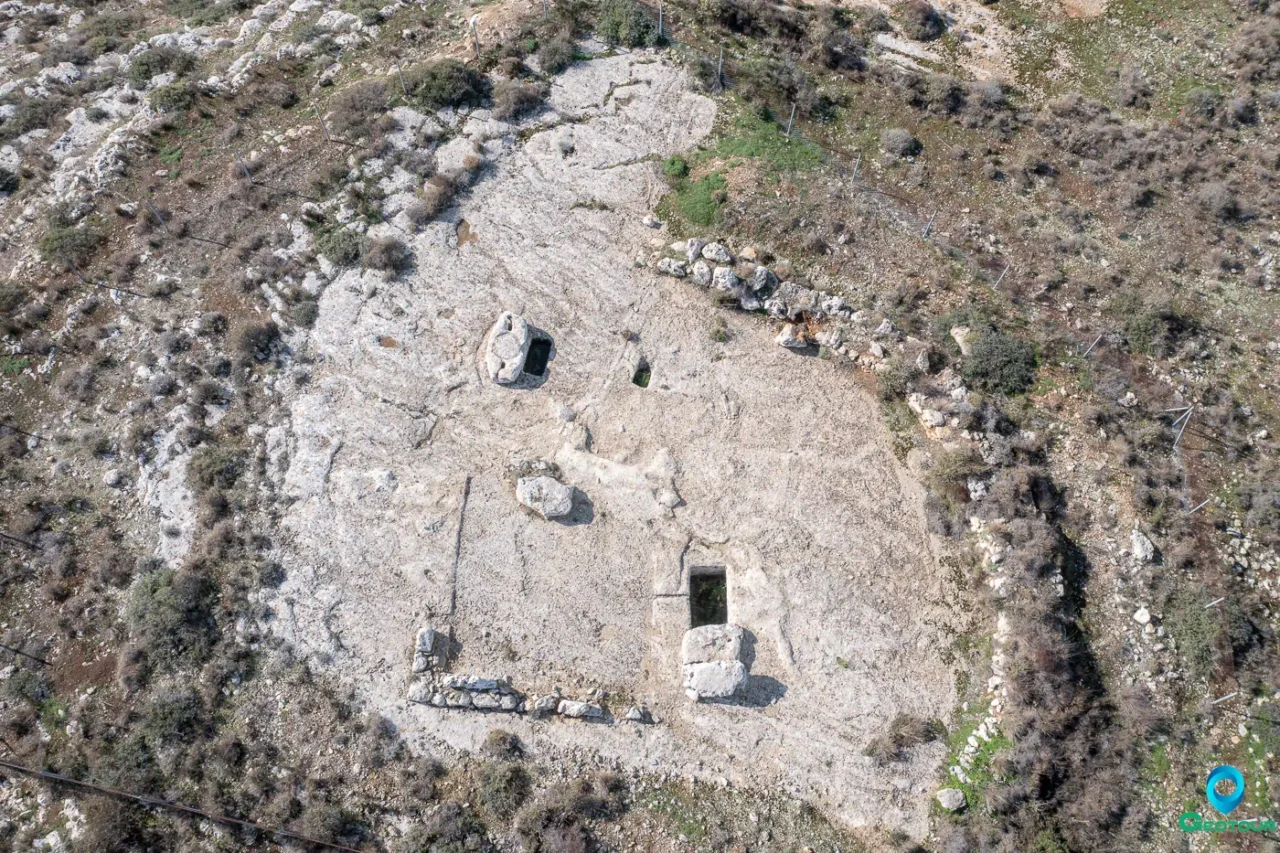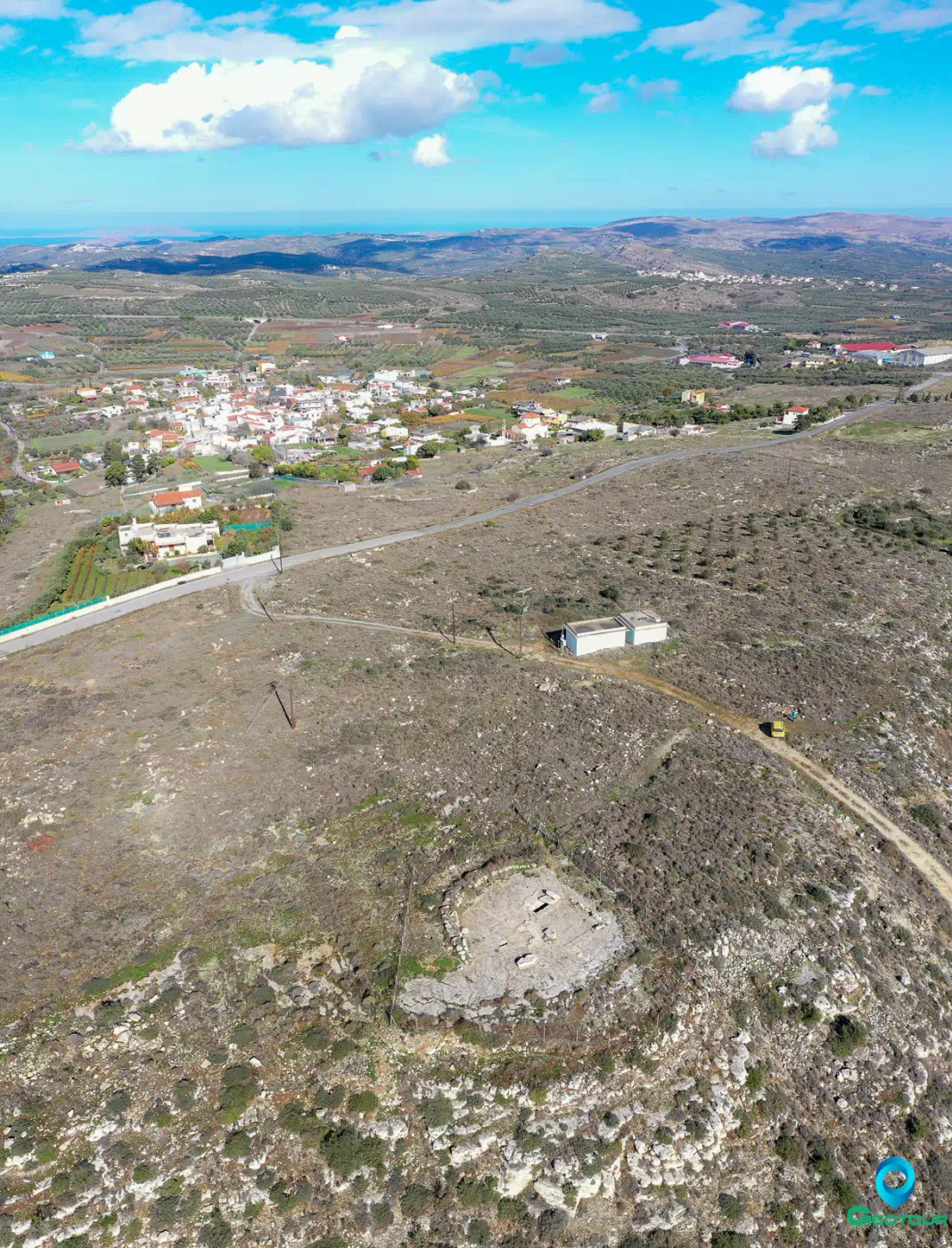




The Karaoula Wine Press is a historical wine production facility located near the village of Alagni in Crete, Greece. It dates back to the 14th century and provides valuable insights into the traditional methods of winemaking practiced in the region during that period. The site is situated at an altitude of 520 meters and is part of a broader network of agricultural features found in the area.
The Winemaking Process at Karaoula
The wine press at Karaoula showcases a two-phase process for producing wine.
Phase One:
- Crushing: Grapes were initially collected and placed within a large, built wine press (5.5m x 6m). This structure was constructed directly on bedrock and lined with “kourasani,” a type of plaster made from crushed tiles and lime. Workers would then crush the grapes with their feet to extract the initial juice.
- Collecting the Must: The juice, or must, flowed through a carved channel into an underground tank (2.2m x 0.95m, 1.1m deep). This tank, also hewn into the limestone bedrock and coated with kourasani, was covered with large stone slabs, two of which remain in their original position today.
Phase Two:
- Pressing the Pomace: After the initial foot crushing, the remaining grape pomace (skins, seeds, and stems) underwent a second pressing using a “Galeagra.” The stone base of this press (1.95m x 0.95m x 0.3m) survives at the site. This process aimed to extract any remaining juice from the pomace.
- Final Collection: The juice extracted during the second pressing flowed into a smaller, carved underground receptacle (1.10m x 0.50m, 0.25m deep) via a channel surrounding the Galeagra.
Site Features and Preservation
The entire winemaking facility at Karaoula was once enclosed within a protective wall. Traces of this wall are still visible on the north and northwest sides of the site. The surviving elements of the wine press, particularly the built structures and carved features, are well-preserved and offer a tangible link to the agricultural practices of the past.
Historical Context
The Karaoula Wine Press is likely pre-Venetian in origin, based on the size of the stone blocks used in its construction. Venetian quarries typically produced smaller blocks, with widths not exceeding 35cm. This suggests that the wine press was potentially built before the Venetian period in Crete (beginning in the 13th century) and continued to be used during and possibly after Venetian rule. This pattern of utilizing existing agricultural infrastructure across different historical periods is common in many regions.
The presence of the Karaoula Wine Press, along with other similar facilities in the region, highlights the importance of viticulture and wine production in the history of Crete. These sites provide valuable archaeological and historical evidence for understanding traditional agricultural practices, land use, and economic activities in the area.
Key Points
- Construction Period: 14th century (pre-Venetian)
- Location: Near Alagni, Crete, Greece. Altitude: 520 meters.
- Dimensions:
- Built wine press: 5.5m x 6m
- Underground tank: 2.2m x 0.95m x 1.1m deep
- Galeagra base: 1.95m x 0.95m x 0.3m
- Small underground receptacle: 1.10m x 0.50m x 0.25m deep
- Historical Significance: Illustrates traditional winemaking methods in pre-Venetian Crete. Provides evidence for agricultural practices and land use.
- Current Status: Well-preserved.
Access
A short easy hike from the asphalt road is required.


There are no comments yet.